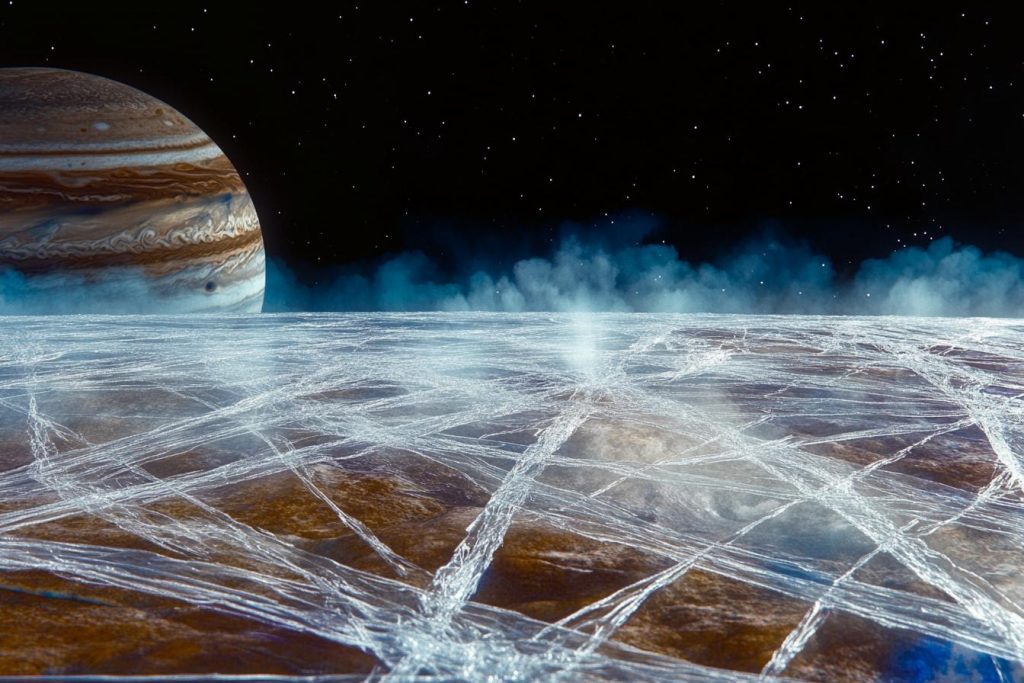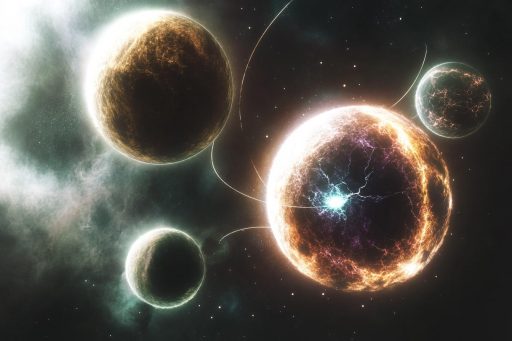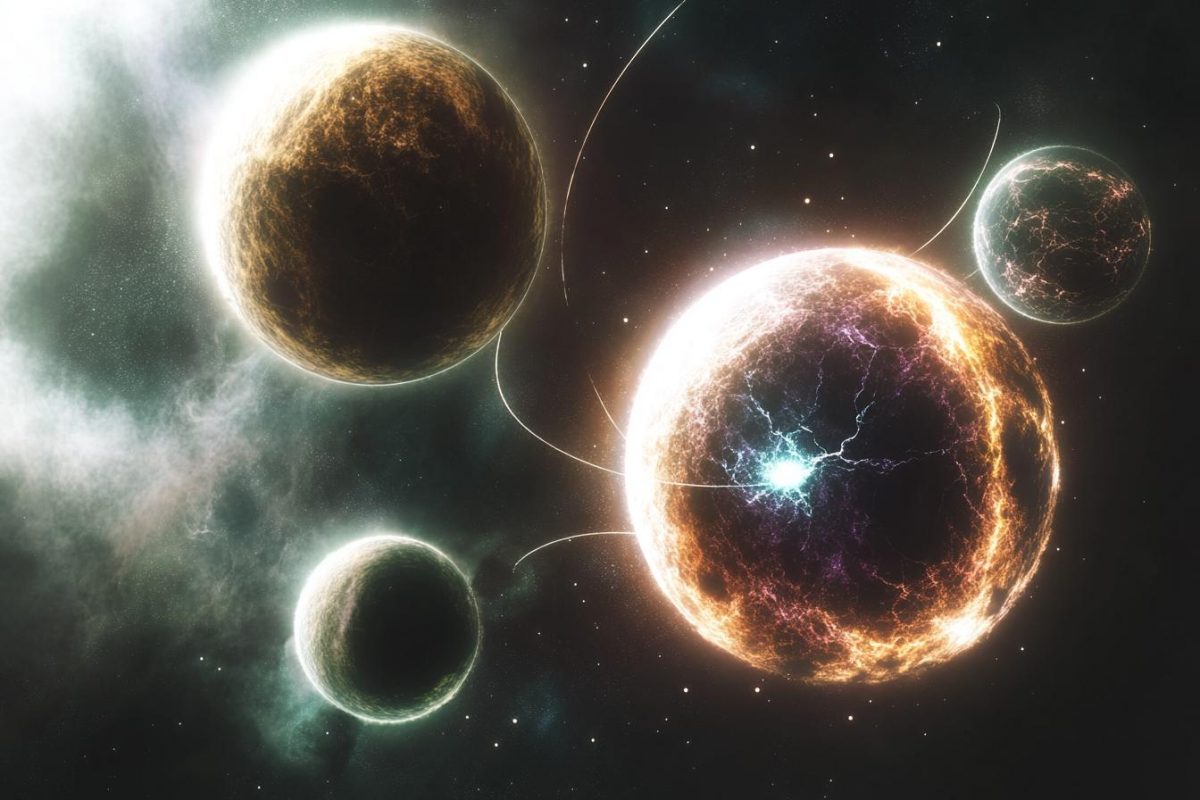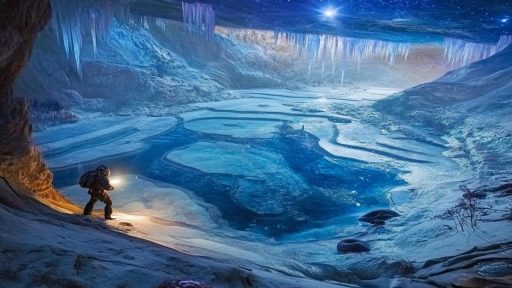
In the shadowy corners of our solar system and beyond, strange moons orbit silently, holding secrets that may change everything we know about space. Some shimmer with icy shells hiding subsurface oceans, while others erupt with alien geysers or display baffling magnetic fields. These celestial bodies have drawn the attention of scientists, dreamers, and conspiracy theorists alike. Are these moons merely cosmic curiosities—or are they hiding something far more significant?
Europa: The Ocean Beneath Ice

Orbiting Jupiter, Europa is wrapped in a thick shell of ice, but beneath that frozen crust lies a global ocean. Scientists believe this hidden sea may harbor the conditions necessary for life. Plumes of water have been spotted erupting from its surface, adding to the mystery. Could an alien ecosystem be thriving in the dark waters far below?
Enceladus: Saturn’s Icy Geyser Moon

Enceladus shoots geysers of water vapor, ice, and organic molecules from massive cracks near its south pole. This moon of Saturn may contain hydrothermal vents similar to those on Earth’s ocean floor—where life can exist without sunlight. These geysers hint at a warm, salty sea beneath the surface. It’s one of the most promising places to search for extraterrestrial life.
Titan: Earth-Like… But Alien

Titan, Saturn’s largest moon, has lakes, rivers, and rain—but not of water. Instead, it features a bizarre methane-based hydrological cycle. Beneath its thick, orange atmosphere may lie a water ocean under layers of ice. With complex chemistry and Earth-like weather patterns, Titan may not only be hiding life—it may be rewriting what life can look like.
Ganymede: The Magnetic Mystery

Ganymede is the largest moon in the solar system, even bigger than Mercury. It’s the only moon known to have its own magnetic field, a phenomenon scientists still can’t fully explain. Beneath its icy crust lies a suspected salty ocean that could interact with this field in strange ways. What lies at the heart of this magnetic giant?
Callisto: The Ancient Enigma

Callisto is heavily cratered, ancient, and seemingly geologically inactive—yet it may still hold secrets. Some researchers believe it harbors a subsurface ocean, isolated for billions of years. Its surface is one of the oldest in the solar system, hinting at a history untouched by geological renewal. What stories could be locked within its frozen layers?
Triton: The Moon That Shouldn’t Be There

Triton orbits Neptune in the opposite direction of its planet’s rotation, suggesting it was captured from elsewhere in the solar system. This retrograde motion is just the start—Triton has geysers, a tenuous atmosphere, and possibly an ocean below its surface. Its bizarre origins make it a prime candidate for harboring the unexpected. Could it be an ancient wanderer carrying alien secrets?
Mimas: The Death Star Look-Alike

Often compared to the Death Star from Star Wars, Mimas looks like just another cratered rock. But recent data suggests something strange may be happening inside—some scientists think it may contain a hidden ocean. If true, this unassuming moon could be a stealthy carrier of deep mysteries. What’s hiding inside that seemingly lifeless shell?
Iapetus: The Moon with Two Faces

Half dark as coal, half bright as snow—Iapetus defies expectations. This Saturnian moon has a massive ridge running around its equator like a belt, and its two-toned appearance baffles scientists. Some believe past impacts or ancient rings could explain the coloring, but theories still fall short. Iapetus may be the most visually puzzling moon in the solar system.
Phobos: The Hollow Horror

Mars’ moon Phobos orbits closer to its planet than any other moon in the solar system. Its oddly low density and strange grooves have led some to speculate it might be hollow—or even artificial. While science leans toward natural explanations, questions remain. What if Phobos is more than just a moon?
Charon: Pluto’s Shadowy Twin

Charon is nearly half the size of Pluto, and some consider the two to be a binary system. It has deep canyons, strange red stains, and a frozen landscape scarred by unknown forces. Charon’s violent history might hint at internal activity—and perhaps something stirring beneath its icy shell. Is Pluto’s companion harboring more than frozen silence?
Lysithea: Jupiter’s Silent Outlier

Among Jupiter’s many moons, Lysithea often escapes attention—but that may be by design. Its odd orbit and unusual spectral readings have led some astronomers to suspect it may be more than a captured asteroid. There are faint magnetic signatures that don’t match its small size, and strange flickers of light recorded on its surface during otherwise quiet observation periods. Could Lysithea be hiding something beneath its barren crust—or is it simply a natural anomaly that defies easy explanation?
What We Don’t See Could Change Everything

These distant moons are not just passive spheres orbiting planets—they are dynamic, mysterious worlds in their own right. From internal oceans to magnetic oddities and chemical enigmas, they push the boundaries of what we believe is possible. Some may contain life, others may hide technology or ancient history written in ice and rock. The real question is: what else is waiting to be discovered in the cold shadows of space?





